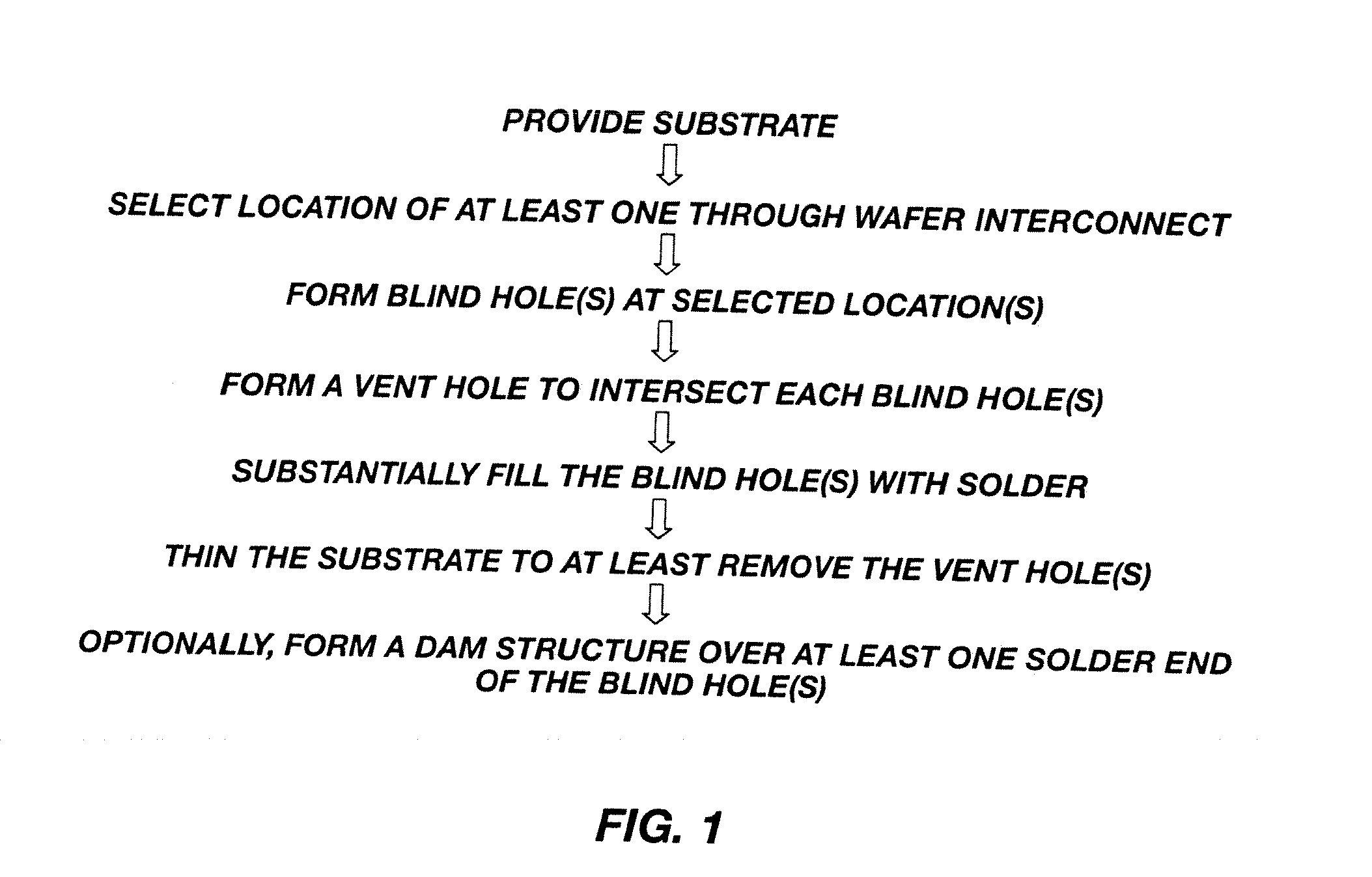Methods for forming through-wafer interconnects and devices and systems having at least one dam structure
a technology of through-wafers and dam structures, which is applied in the direction of semiconductor devices, semiconductor/solid-state device details, electrical apparatus, etc., can solve the problems of molten solder being buried in the hollow, and reducing the amount of solder in the ball to complete the conductive connection, etc., to achieve the effect of eliminating cross-contamination concerns
- Summary
- Abstract
- Description
- Claims
- Application Information
AI Technical Summary
Benefits of technology
Problems solved by technology
Method used
Image
Examples
Embodiment Construction
[0043] The invention comprises methods for forming through vias (“TV”) or through-wafer interconnects (“TWIs”) through a substrate structures. The term “via” is a general term denoting a conductor passing through a substrate structure. The term “through-wafer interconnect” is often used more specifically where the substrate structure is a wafer of semiconductor material (e.g., a semiconductor wafer). In this application, the terms “substrate” and “wafer” will be used interchangeably as encompassing any substrate material which may be subjected to a thinning process for reducing its thickness. Thus, the methods of the present invention relate to semiconductor devices whether in the wafer form or individualized die form that are thinnable to a final thickness. Accordingly, the term “substrate” refers not only to silicon wafers (e.g., monocrystalline silicon or polycrystalline silicon) but may also refer to silicon on insulator (“SOI”) substrates, silicon on sapphire (“SOS”) substrates...
PUM
| Property | Measurement | Unit |
|---|---|---|
| thickness | aaaaa | aaaaa |
| diameter | aaaaa | aaaaa |
| thickness | aaaaa | aaaaa |
Abstract
Description
Claims
Application Information
 Login to View More
Login to View More - R&D
- Intellectual Property
- Life Sciences
- Materials
- Tech Scout
- Unparalleled Data Quality
- Higher Quality Content
- 60% Fewer Hallucinations
Browse by: Latest US Patents, China's latest patents, Technical Efficacy Thesaurus, Application Domain, Technology Topic, Popular Technical Reports.
© 2025 PatSnap. All rights reserved.Legal|Privacy policy|Modern Slavery Act Transparency Statement|Sitemap|About US| Contact US: help@patsnap.com



